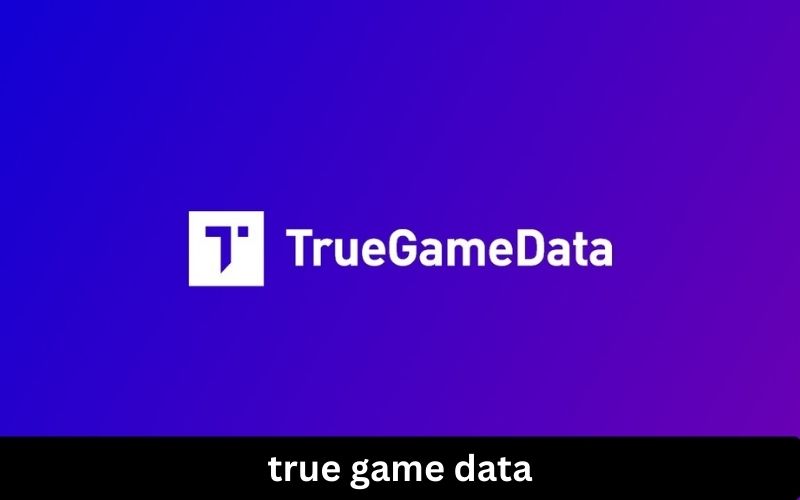In the vast digital realm of gaming, data reigns supreme. From player behavior to game performance, data provides valuable insights that shape the industry. However, not all game data is created equal. To truly understand and optimize gaming experiences, we need game data. In this blog post, we’ll delve into the significance of true game data, its benefits, challenges, and the future of game data analysis.
What is True Game Data?
True game data is raw, unfiltered information that accurately represents the gaming experience. It encompasses everything from player actions and in-game events to technical performance metrics. Unlike manipulated or aggregated data, true game data provides a clear and unbiased picture of the gaming landscape.
Benefits of True Game Data
- Enhanced Player Experience: True data enables game developers to identify and address issues that negatively impact player satisfaction. By understanding player behavior and preferences, developers can create more engaging and enjoyable gaming experiences.
- Improved Game Design: Accurate data allows game designers to make informed decisions about game mechanics, level design, and progression systems. By analyzing player feedback and performance metrics, developers can iterate on their designs to create more balanced and rewarding games.
- Optimized Game Performance: True game helps identify performance bottlenecks and technical issues that can hinder gameplay. By understanding how hardware and software interact, developers can optimize game performance for a smoother and more enjoyable experience.
- Data-Driven Decision Making: True game provides the foundation for data-driven decision making in the gaming industry. By analyzing trends and patterns, developers can make informed choices about game development, marketing, and monetization strategies.
Challenges of Obtaining True Game Data
- Data Quality: Ensuring the accuracy and reliability of game data can be challenging. Factors such as data collection methods, storage practices, and data processing techniques can impact data quality.
- Data Privacy: Protecting player privacy is a top priority in the gaming industry. Collecting and analyzing true game data requires careful consideration of data privacy regulations and best practices.
- Data Analysis: Extracting meaningful insights from large datasets can be complex. Advanced analytics techniques and tools are necessary to effectively analyze true game data and uncover valuable information.
The Future of Game Data Analysis
As technology continues to advance, the possibilities for game data analysis are expanding. Artificial intelligence (AI) and machine learning (ML) are playing an increasingly important role in processing and analyzing large datasets. These technologies can help identify patterns, make predictions, and automate data-driven tasks.
Additionally, the rise of cloud computing and big data platforms is enabling game developers to store and process vast amounts of data more efficiently. This will facilitate more sophisticated data analysis and enable new insights into player behavior and game performance.
Data Quality and Standardization
- Data Quality Assurance: Implementing robust data quality assurance processes to ensure data accuracy, consistency, and completeness.
- Data Standardization: Establishing standardized data formats and definitions to facilitate data sharing, analysis, and comparison across different games and platforms.
Real-time Data Analysis
- Real-time Analytics: Leveraging real-time data processing and analysis techniques to gain immediate insights into player behavior, game performance, and emerging trends.
- Predictive Analytics: Using machine learning algorithms to predict future player behavior, identify potential issues, and optimize game design.
Ethical Considerations
- Data Privacy: Ensuring compliance with data privacy regulations and protecting player data from unauthorized access or misuse.
- Ethical AI: Developing AI algorithms that are fair, transparent, and unbiased, avoiding discrimination or harmful outcomes.
Integration with Other Technologies
- Cloud Computing: Utilizing cloud-based platforms to store, process, and analyze large volumes of game data efficiently.
- Internet of Things (IoT): Integrating IoT devices with gaming systems to collect additional data points, such as player biometric information or environmental factors.
Game Economics and Monetization
- User Acquisition and Retention: Analyzing player data to optimize user acquisition strategies and improve player retention rates.
- Monetization Optimization: Identifying effective monetization strategies based on player behavior and preferences.
Competitive Analysis
- Benchmarking: Comparing game data with industry benchmarks to identify areas for improvement and gain a competitive advantage.
- Market Trends: Tracking emerging trends and competitor activities to stay ahead of the curve.
Personalized Gaming Experiences
- Player Segmentation: Grouping players based on their characteristics and preferences to deliver personalized content and recommendations.
- Adaptive Difficulty: Adjusting game difficulty levels in real-time based on player performance and progress.
Conclusion
True game is essential for understanding and optimizing the gaming experience. By providing accurate and unbiased information, true game data empowers game developers to make informed decisions, create engaging games, and deliver exceptional value to players. As technology continues to evolve, the importance of true game data will only grow. By harnessing the power of true game data, the gaming industry can reach new heights of innovation and success.




